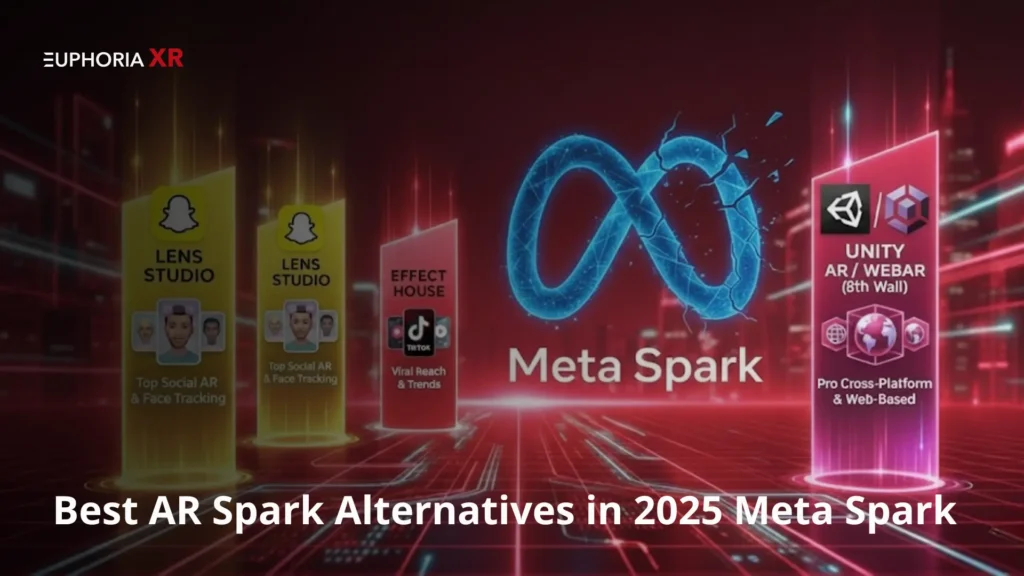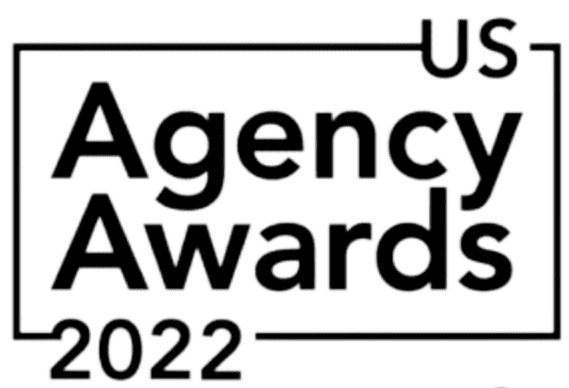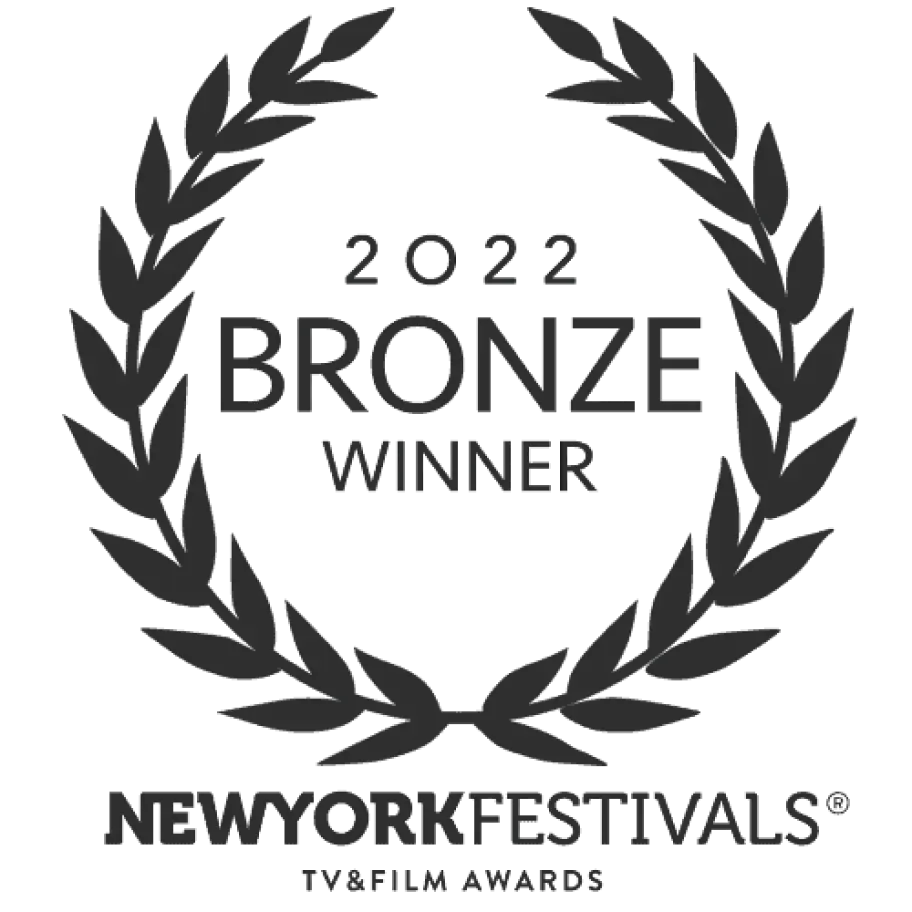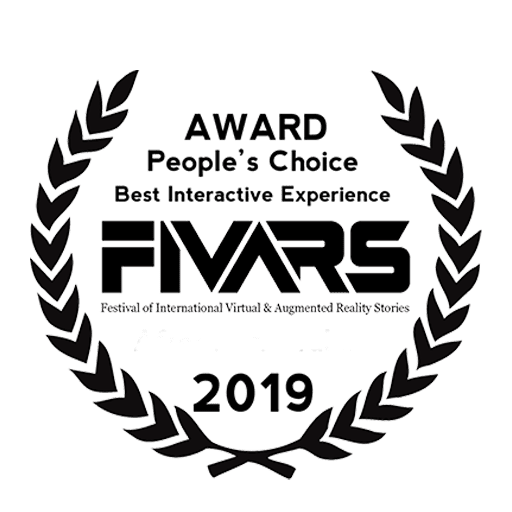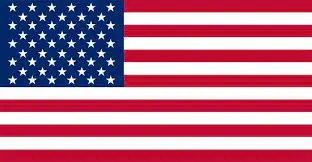Have you ever asked yourself why some platforms, such as Binance NFT, are expanding whereas others are slowly dying in the digital universe?
It is not that magic. It is a union of right time, right place, keen planning, and features that are not useless.
So there is the point: when you think that to compete, you need to have a billion-dollar budget, you do not.
Having the proper blueprint and a few tools, you can develop an NFT marketplace like Binance that is specific to your niche and users, even given that you have to start right at the beginning. There is a need. The number of NFT deals worldwide is increasing, and the millions of NFT users are hungry for more convenient platforms. But most marketplaces fail due to the fact that they either make it too complicated or overlook the basics.
Thus, whether you are a startup owner, tech entrepreneur, or Web3 developer, this guide is made with you in mind. We will take you step-by-step along a full roadmap of NFT marketplace development: its pricing and key features, monetization options, technology stack, and things to consider to avoid the most common pitfalls that people fall into.
You will understand what it will require to create your personalized NFT marketplace and why it is the best opportunity to begin now.
What is an NFT Marketplace?
An NFT marketplace is an online market where individuals can purchase, trade, sell, and mint one-of-a-kind digital objects-such as art, game objects, music, and sports artifacts. Every NFT is a unique token present on a blockchain, where ownership is certified. It is more or less like the rare collectible card, except it resides on the web.
Why Develop an NFT Marketplace Like Binance?
Binance NFT has been blasting due to reliable infrastructure, low costs, and highly efficient cross-chain capabilities (Ethereum, BNB Chain, etc.). The creation of a similar platform implies the usage of the same strengths:
A huge number of customers are willing to purchase and exchange
Multi-blockchain capable flexibility
Fast, safe transactions that keep the customers returning
Latest NFT Marketplace Trends & Statistics
This is what the statistics indicate:
In 2023, the value of the global NFT market is 36.1 billion; by 2025, it is projected to reach 61 billion, with a growth rate of 41.6 % per year
Ethereum is leading in NFT trades with more than 72 % of market share and trades worth 8.5 billion dollars.
The number of daily active traders of NFTs (wallets) increased by 44 % between August 2022 and August 2023, from 217k to 315k wallets, despite the 31 % decrease in overall trade value
The NFT part of blockchain gaming has expanded tremendously: 7.4 million daily active wallets in 2024, growing by 421 % year-over-year, and representing 30 % or more of NFT market activity. (Source: https://venturebeat.com/games/blockchain-gaming-grows-to-7-4m-active-wallets-in-2024-up-421-dappradar/)
Such numbers are indicative of robust growth, particularly in the gaming sector, yet an indicator that the market has grown up and user input is more important than ever. Interested in developing a successful NFT marketplace? The full roadmap is coming up!
Top NFT Marketplaces in 2025
Want to know who is currently dominating the NFT space? These are the five platforms that are leading the market in terms of the gold standard to develop an NFT marketplace like Binance.
OpenSea
The first titan of the market is OpenSea. It was released in 2017, and it will be the biggest in terms of trading volume and active users. It can handle various blockchains such as Ethereum, Polygon, and Arbitrum, and a great variety of NFTs, including art and music, as well as virtual land.
Special Feature: User-friendly interface and huge product range.
Good For: Artists, collectors, and creators of all kinds are good for this.
Binance NFT
Supported by the Binance exchange, this platform is also associated with high-level security, low cost, and convenient integration of crypto. It supports Ethereum and BNB Chain, and addresses a worldwide crypto-smart customer base.
Special Feature: Faster, cheaper to mint, and high relative liquidity.
Recommended to: Traders and investors who already use Binance.
Rarible
Rarible is community-oriented. It is decentralized, multi-chain (Ethereum, Flow, Tezos), and easy to mint, list, and sell NFTs without needing to know much about it.
Key point: Creator royalties and governance token (RARI)
Who is it good for: Single artists, Web3-loving people
Axie Infinity
Constructed based on a play-to-earn game, Axie Infinity allows one to buy and sell in-game items and digital creatures known as Axies. It recorded more than $4 billion worth of all-time sales in 2021.
Special Feature: Trade-like experience of using NFTs in a Gamified manner
Good for: Web3 game players and game designers
NBA Top Shot
NBA Top Shot is a digital trading card game that allows users to sell and purchase officially licensed NBA video highlights in NFT format created on the Flow blockchain developed by Dapper Labs. It was the first introduction of NFTs to many sports fans.
Special Feature: Mass market-friendly and licensed material.
Good for: Sports collectors and label-hungry people.
All these marketplaces have been a success because they have concentrated on a well-defined niche, good technology, and a simple user experience. If you are intending to create your own, take a close look at what they are doing right and how you can do better.
Suggested Read: https://euphoriaxr.com/top-metaverse-development-companies/
Unified NFT Marketplace Development Framework
The development of a successful NFT marketplace such as Binance is not about going to word coding. It begins with the right structure, a framework that should take you through the idea to go live stage and has a platform that is user-friendly, secure, and can be expanded. You will find the roadmap as follows.
Research, Discovery & Market Positioning
Nail your niche and be clear on who you are building for. Do you want to develop a marketplace of digital artists, NFT-oriented games, sports collectibles, or a completely new alternative? This step involves examination of competitors, research on the regulation, and why your platform is different. In this case, when you understand what emptinesses lie in the existing market, you can create a platform that will answer real needs and will be outstanding.
Decide on Revenue Model & Monetization Strategy
An excellent product will never be enough without a profitable business concept. There are several monetization strategies you can adhere to, such as listing or transaction fees or high-quality subscriptions, or featured listings. Choose soon how your platform will generate money to own the correct mechanisms around it. Your model must deliver value to the user, and yet your business should be sustainable.
Select Blockchain & Plan Technical Architecture
Your choice of blockchain will influence all of the costs, velocity, and development libraries. Ethereum is the most popular; however, other options can be better, such as BNB Chain, Solana, and Polygon, which are cheaper and more scalable. You are also going to choose your NFT standards, such as ERC-721 or ERC-1155, how you will be storing your metadata with tools such as IPFS, and how wallet connections will be made. It is this ground that determines the extent to which your platform will be secure, speedy, as well as future-resistant.
Design User-Centric UI/UX & Front-End MVP
There is no chance that the most powerful NFT platform will succeed when users find it confusing. Your interface must be user-friendly, sleek, and non-technical; all users should access your platform and easily connect to their wallets, mint NFTs, visit collections, and otherwise make transactions. Rather than developing all of it, it is best to begin with a minimum viable product (MVP) that can offer the primary experience. If you release with a minimum of capabilities, you can integrate the responses and make a rapid iteration.
Smart Contract Development & Core Backend Integration
The core of your marketplace will be smart contracts, which mint NFTs and list them on the market, and control royalties and the logic of auctions. Meanwhile, your backend takes care of user profiles, transactions that were made, the content, and analytics of the platform. Both should be constructed safely, and they should be tested. One bug in a smart contract would cost thousands of people. Apply established structures, and in case of any doubts, engage in an audit.
Testing, Deployment & QA
Nobody wishes to be the next NFT platform to have a security breach. It is the reason why we need to test well. Simulate the interactions with wallets in cases of NFT purchase using test networks (e.g., Goerli or Mumbai). Cross-test your UI on several devices. Carry out run performance tests during peak traffic. Testing at this level protects you against big losses in the future. You should launch your marketplace into the mainnet only when everything is working fine.
Integrate Wallets & Payment Systems
The connection with the users, whom you address, is through wallet integration. MetaMask, Trust Wallet, and WalletConnect are a requirement of Web3 users, so make sure to check out fiat options as well, should you appeal to new users. Services such as MoonPay or Stripe can allow purchasing NFTs with credit cards. The more accessible the onboarding is, the quicker your user base will develop.
Launch & Continuous Iteration
When opening your NFT market, it is only the first step. After launch, you pay attention to numbers, responses, and iteration. Observe the interface of people using the platform. Do they make purchases? Losses during minting? Measure the metrics and keep enhancing the experience. Continuously add new features, streamline performance, and make your marketplace in line with the needs of the users. The updates occur in the growth.
Do you want to develop the next NFT platform like Binance? It can be realized by us as we are the top NFT Makers & Metaverse Development Company.
Benefits of NFT Marketplace Development
Curious to build an NFT marketplace in 2025? This is why it will take your time (and money):
Transparency & Traceability
All transactions are documented on a public blockchain.
Compulsory chain of ownership checking in case of buyers. They can confirm the ownership and the history behind the price.
Artists have evidence that they have made the art themselves.
No backdoor deals or pipeline diversions.
Increased Security
With smart contracts, transactions are automatically addressed.
No intermediate investors = reduced possibilities of fraud.
Laws are encoded; thus, the default action is to enforce them.
Information will be tamper-proof.
Instant Payments & Liquidity
How to sell digital assets? Sell it anywhere in the world instantly.
Clients use cryptocurrency, and the sellers receive payment immediately.
No delays, no banks.
24-hour international availability.
Decentralized Asset Control
The users own what they purchase.
Ownership cannot be blocked or deleted by a third party other than the owner.
NFTs reside on their wallet and not your database.
Reduced Fees & Greater Independence
Remove the layers in the middle and give the savings to creators.
Retain a greater amount of money out of each sale.
Artist royalties on autopilot = artist’s passive income.
Open pricing creates confidence.
Long-Term Growth Potential
NFTs are not limited to art; they could be almost anything, eg, gaming, music, real estate, identity.
They are already being adopted in multiple industries.
Machines such as Nike and Starbucks are on the front foot.
You can still be the leader in the next big wave.
Types of NFT Marketplaces
The appropriate form of marketplace selection relies on your audience and the objectives of your goals. And here are five typical types, and each has its advantages:
Universal Marketplaces
The number of supported NFTs in these platforms is wide: art, music, collectibles, domains, and even virtual property. A good example is OpenSea. It is the one-stop destination for everything NFT.
Art-focused Platforms
Other marketplaces have been constructed like exclusive stores that only deal with digital artists and collectors. These sites focus on visual storytelling, curatorial galleries, and royalties with artists. Such sites are SuperRare or Foundation.
Gaming NFT Marketplaces
NFTs can be bought and sold as in-game items, characters, skins, and virtual land. The niche being targeted by Axie Infinity and Immutable X. Blockchain games may be directly available on these platforms.
Sports & Collectibles Platforms
They are constructed to attract a fan base that likes to purchase digital trading cards, video moments, and collectibles of their sold football team or player of choice. The most popular example under this category is NBA Top Shot.
Multi-Chain Marketplaces
These platforms do not lock to a single blockchain like Ethereum, Polygon, and Solana, but each. This increases swiftness, minimizes charges, and appeals to an extended group of audiences.
Must-Have Features of an NFT Marketplace
In case you intend to create an actual NFT marketplace (not just a simple Web3 landing page), these are the main features your users will require right out of the gate.
Storefront with NFT Previews
Provide a visual-first experience to users, as it is with window shopping.
At your storefront should be displayed:
Quality NFT preview
Producer, prices
Categories or filters that allow fast browsing
NFT Listings & Ranking System
Allow users to express their NFTs with ease and with pertinent information such as:
Title, price, and description
Auction or set price options
Duration or number of editions
The ranking systems (e.g., Top trending, Most viewed) make the marketplace active and interesting.
Advanced Token Search
When your collection becomes large, it is required that a user find what they want.
A strong search ought to comprise:
No name, creator, category keywords filtration
Order by price, renown, or list time
Strain at the chain level, format level, or auction level
Crypto Wallet Integration
That is the way users log in and store NFTs, as well as make transactions.
Sustain large wallets such as:
MetaMask
Trust Wallet
WalletConnect
Turn the connection process into a one-click and non-friction experience.
NFT Minting and Auctions
Enable artists to tokenize NFTs in your browser or app, without writing any code.
Bonus: Allow auction-type selling, which generates a sense of urgency and increases bids.
Listing Status Tracking
Sellers require real-time updates such as:
“Active”
“Sold”
“The end of the auction is near”.
Write clear, live statuses to gain more trust and fewer support queries.
Secure Payment Gateways
Processing of crypto payments can be done safely and without delay.
To garner more users, it would be good to ensure that there is:
Option to pay by Fiat means (Stripe, MoonPay)
Multi-token payments (ETH, BNB, MATIC)
User Profiles and Registration
Every user is to have a profile, which is to display:
NFTs owned
NFTs created
Wallet address/username
Confirmed in status or connections
This increases believability, particularly on high-value sales.
Are you prepared to get from concept to MVP? See how our NFT marketplace solutions can assist by calling us.
Nice-to-Have Features
Wish for something different? These functionalities are not mandatory but compelling additions to enhance creators’ success, more engagement, and UX.
NFT Bundling
Allow merchants to bundle several NFTs in one sale.
Perfect for:
Series drops
Game asset packs
Event-based collections
Royalties Management
Unlike current systems, where creators have to manually collect royalties every time their NFT is sold, enable creators to automatically collect royalties each time their NFT is sold to a new owner. This makes it an attraction to artists and musicians.
Cross-Chain Support
Allow the use of multiple blockchains, such as:
Ethereum
BNB Chain
Polygon
Solana
The more the chains, the less the fees with far-reaching grasps.
Social Sharing Buttons
That enables the users to share the listings on:
Twitter/X
Discord
Telegram
This increases traffic and makes listings virus.
Analytics Dashboard
Provide a visual dashboard of such statistics as:
Total sales
Trends in NFT values
Auction performance
Excellent for the power sellers, traders/collectors who handled large quantities of inventory.
Revenue Models: How to Make Money with an NFT Marketplace
NFT marketplaces are not only technical marvels but also a way of earning a substantial income. In case you are creating your platform, these are the most frequent methods of obtaining revenue:
Listing Fees
Set a slight cost to allow charge creators or sellers to list their NFTs on your platform. It will be adequate when your market is well-seen or niche-demanded. The fact that it allows one to sieve out the poor-quality spam listings is also an added advantage.
Transaction Fees
Charge a percentage of every successfully made sale. An example here would be a 2.5% fee on each NFT sold, similar to the one OpenSea has. With this model, you can grow your revenue as your platform expands in volume.
Minting Fees
Make users create (mint) their NFTs on your platform. You may apply a fixed price or the gas price of blockchain processing. It is perfect for artist/creator-friendly websites.
Featured NFT Promotions
You should provide paid announcements to promote NFTs on the home page or the most popular categories. Offer sellers to pay to get increased visibility, like sponsored posts. It can be successfully applied, in particular, in such a competitive niche as gaming or digital art.
Subscription Models
Income: Charge the users on a monthly or yearly basis on the premise of such premium features as:
Advanced analytics
Unlimited minting
Tools in portfolio management
Ability to get new draws earlier
The model is most effective with power users and collectors.
B2B White-Label Services
Provide your platform as a white-label NFT marketplace product. Allow brands or agencies to go on their own NFT websites with your codebase. This is the reliable method to monetize your infrastructure on scale.
Binance NFT Marketplace Clone Script
Do you want to get up even more quickly without reinvention? A Binance NFT Marketplace Clone offering provides you with an entire Binance NFT ecosystem with all the features, templates that can be customized, and launched.
Overview of Clone Script Development
A clone script is a ready-made program solution that is able to copy the main structure and functionality of Binance NFT. You no longer have to start with zero. You instead have a test-proven, scalable foundation.
Key Features Included
The majority of the Binance clone scripts have:
Listing and minting of NFTs
Connection of crypto wallets
Automation of Smart contracts
Admin dashboard
Auction system
Support of multi-chain (Ethereum, BNB Chain, Polygon)
Advantages & Customization Options
The cost is less, and months of development time are saved in the use of a clone script.
You are free to do everything:
Rebrand the UI/UX
Install new features
Reform the tariffs
Close cooperation with other wallets or payment gateways
You can have the experience of buying a furnished house and make it your way.
Ideal Use Cases
An excellent use of a Binance NFT clone script would be:
The NFT market is being tested by startups in the blink of an eye
NFT marketplace facilities by agencies
The entrepreneurs who launch NFT verticals in niche directions (e.g, sports, gaming, photography)
Tech Stack for NFT Marketplace Development
Frontend: React.js / Vue.js
imply, your frontend is where the users visit and browse through NFTs, connect wallets and listings, and explore them. React.js is also one of the most common languages that allow creating high-performance interfaces, particularly in the case of real-time applications. Vue.js is a marvelous alternative, as well as lightweight, easy to use, and adaptive. They are both suitable for building responsive and mobile-friendly platforms to handle NFTs, and the navigation and loading speed will be a breeze.
Backend: Node.js / Python
The backend evolves all of the processes at the back, including user accounts, NFT data, payment channels, and blockchain connections. Node.js is real-time and asynchronous, which is appropriate for marketplaces that require high-volume transactions in real-time. Python is ideal in situations where the platform might need machine learning functionality or extensive analytics in the future. They can both be scalable, based on the chosen feature set, and a professional developer.
Blockchain: Ethereum, BNB Chain, Polygon, Solana
The type of blockchain you engage in affects transaction fees, speed, as well as user accessibility. Ethereum is the most accepted one, but with higher gas fees. The BNB Chain is characterized by cheap, fast transactions and is suitable for marketplaces that have large traffic. Polygon is an excellent, environmentally friendly choice that merges with Ethereum. Solana transactions are remarkably quick and inexpensive, and therefore, it is a great option to use it to create a gaming-based NFT project.
Smart Contracts: Solidity, Rust
All the important functions, such as minting, transferring, and enforcing royalties, are handled with smart contracts. Ethereum, BNB Chain, and Polygon use Solidity as the language of choice. Its developer community is huge, and it has loads of open-source libraries available. Solana uses Rust as a construction block and is renowned due to its performance and security. It does not matter which you adopt, but smart contracts should be proven and tested against audits before being released to prevent expensive vulnerabilities.
Storage: IPFS, Filecoin
Your platform will require decentralized storage because most blockchains are not tailored to handling big files. IPFS allows you to encrypt information, displays, and video files, and metadata to be stored securely on a form so that they can be read using a content hash. Filecoin is an extension of IPFS, which includes a layer of proven permanent storage. With either of the systems, the NFT media will always be online even in the event that a server fails.
Wallets: MetaMask, WalletConnect, Trust Wallet
It is the interconnection of crypto wallets that enables individuals to sign in and possess assets, as well as conduct transactions. The most supported Web3 wallet is MetaMask, and it caters to desktop users. WalletConnect is excellent when it comes to connecting desktop websites and mobile wallets. The good choice is a mobile-first marketplace backed by Trust Wallet, which is supported by Binance. It is also important to provide a convenient and safe wallet integration.
NFT Marketplace Development Costs
MVP Cost Estimate: $35,000–$50,000+
An MVP or a minimum viable product will have only the basic functionality, such as minting, listing, connecting a wallet, and convenient transactions. This version is constructed to make you ready to go fast, get initial responses, and test the market demand without investing unwisely. It is perfect when founders prefer to check the idea before a massive expansion.
Full-Scale Project: $70,000–$150,000+
An explosion in functionality, a developed NFT marketplace enhances activities such as auction systems, royalty systems, cross-chain support, an administration dashboard, and many more searching options and filters. This one has a long-term purpose that can handle large user, creator, and NFT volumes. It could be appropriate in platforms that want to play at a high level or even enter the listing of marketing and alliances.
Key Cost Factors:
Blockchain Selection
The kind of blockchain you adopt has implications for development as well as the cost of transactions by users. Ethereum is more costly to use, whereas BNB Chain and Polygon provide low-cost choices with practically equal opportunities.
Number of Features
The more the features, the more design time, development time, and testing time are needed. A plain platform with fixed-price listing is going to be significantly cheaper than one with auctioning, bundles, socialization, and analytics dashboards.
UI/UX Complexity
The frontend requires time and cause to ensure custom animations, responsive design, and elaborate sequential conception of constraints. In case you want something sophisticated and branded, be ready to spend more on the design and development.
Developer Location
Cost is also influenced by where your development team is. Those that are located in the U.S or Western Europe are likely to be more expensive. Very talented developers in Eastern Europe, South Asia, or Latin America can usually provide outstanding work at lower costs.
Challenges in NFT Marketplace Development
Assembling a strong NFT marketplace has a couple of setbacks. The following are the major challenges to look out for:
Smart Contract Risks
Security weaknesses in smart contract codes may result in property loss due to security breaches.
Contracts cannot be changed once deployed. There is no margin of error.
Auditing is necessary to avoid exploits and make sure that the transaction logic is functional.
Scalability & Throughput
The majority of blockchains (including Ethereum) are subject to congestion, which causes delays.
An improperly optimized backend may collapse due to an increase in the number of users or during peak usage.
The platforms should be developed with a scale of the frontend load and blockchain interaction.
Gas Fees Optimization
The expensive gas charges make trading unattractive, particularly for low-value NFTs.
Ethereum platforms require smart contracts or Layer 2s that are gas-efficient.
There are alternative ways of doing bulk transactions or small transactions by utilizing chains such as Polygon and BNB that are affordable.
Secure NFT Storage
The NFT media (images, audio, metadata) are frequently off-chain.
Files stored in the centralized servers are at risk; thus, NFTs are practically not useful.
Decentralized solutions such as IPFS or Filecoin have long-term fund stability and integrity.
Regulatory and Compliance Barriers
NFT marketplaces can be exposed to financial, copyright, or consumer laws.
Failure to comply will result in bans on their accounts, take-downs on the platform, or punishment by law.
Most regions need KYC/AML, copyright protection, and transparency in tax.
Best Practices for NFT Marketplace Development
There are established best practices, which you can easily make use of to avoid development and launch setbacks.
Ensure Code Audits and Security Reviews
Have third-party smart contract audits before going live.
Conduct run bug bounties to create an early detection of bugs.
Monitor the logs and transactions, and be suspicious after launch.
Choose a Scalable Blockchain
Choose a blockchain that renders a sensible pace, protection, and cost.
Ethereum will provide trustworthiness, and Polygon, BNB, and Solana will be faster and cheaper.
Be willing to support multiple chains as customers increase.
Focus on UI/UX Simplicity
Make navigation and connection with the wallet convenient and easy to learn.
Minimize clicks during the listing and buying process.
Implement clean visualization and friendly tooltips that can make a user follow a new experience.
Optimize for Mobile and Multi-Device Access
Make your UI responsive to all devices, phones, tablets, and desktops.
Cross-device and cross-browser tests to guarantee similarity.
Look at the possibility of developing a progressive web app or a light mobile app as the number of users grows.
Partner with a Trusted NFT Marketplace Development Company
Professional dev teams make sure that you do not fall into the usual traps.
Having a powerful tech partner does not only come in one package; it comes with the design of UI structure, smart contract, and security.
Why Build with EuphoriaXR?
The only thing that is not enough to launch a highly functional NFT market is a development team, indeed, a strong vision of the whole picture.
Here is the reason business uses EuphoriaXR:
Cross-Chain Experience: We build on Ethereum, BNB Chain, Solana, Polygon, and others; this provides you with freedom and scalability.
End-to-End Service: We take care of the whole process, including UI/UX design, smart contract audit, and after-launch maintenance.
Quick Launch Solutions: Opt to ensure a fast build with your custom build or our Binance NFT copy/paste script.
Security First Approach: All the platforms are audited in contracts, penetration tested, and checked for their compliance.
Configurable & Adaptable: Need to get lean or expect a large-scale adoption, our systems can be configured to fit you.
When you create a platform with EuphoriaXR, you not only open a platform, but you also enter the NFT space as a provider of solutions to Web3 as a reliable partner.
Together, we can make your idea for the NFT marketplace a reality.
End Note!
The marketplace of the NFT economy is expanding at a high speed, and so is the need for effective and convenient marketplaces. The possibility of gaining a monopoly in a niche or creating a product that rivals the large platforms is broadly open.
So, in case you had the question of how to develop an NFT marketplace like Binance, now you have a roadmap. To select the appropriate blockchain, revenue model, develop scalable features, and the smart contracts that might be considered secure, every step is important.
And the very best part of it? It is not your responsibility to do the work by yourself.
Not dependent on solid strategy, relevant features, and a trustworthy development partner, you will be able to develop a marketplace and make it not only look good but also operate, grow, and earn.
Ready to construct? How about we bring your vision of an NFT marketplace to life?
Frequently Asked Questions(FAQs)
What is NFT marketplace development, and why is it important?
Development of an NFT marketplace refers to the process of designing an NFT marketplace where sellers can mint, buy, sell, or trade non-fungible tokens. It matters because it drives the digital economy of ownership: art, gaming, music, real estate, and more are all using it to drive their digital business.
How do I choose the right blockchain for NFT development?
It is dependent on what you desire to do. The most popular is Ethereum, which has a higher cost. Transactions in Polygon and BNB Chain are cheaper and faster. Solana is the optimum choice when it comes to fast and gaming-oriented projects.
What are the must-have features in an NFT marketplace?
You should have a storefront, NFT listing and minting, connection to a wallet, safe payments, filter by search, and profiles. These are essential characteristics that any NFT market has to possess.
Can I use a clone script to develop an NFT marketplace like Binance?
Yes. Clone scripts refer to pre-designed infrastructure that copies the main elements of Binance NFT. They are easy to save time and money, and still, they can be fully personalized according to the brand and objectives.
How much does it cost to develop an NFT marketplace?
An MVP costs between 35 and 50 thousand dollars, and a full-scale platform between 70 and 150 thousand dollars+. The budget is affected by such factors as feature complexity, blockchain selection, developer location, and others.
What are some tips for successful NFT marketplace development?
Begin with research and market placement. Select a scalable blockchain. Make your UI/UX simple. Make the security of smart contracts a priority. Pre-launch testing should be done. And where you can, team up with a crew that has done it already.









